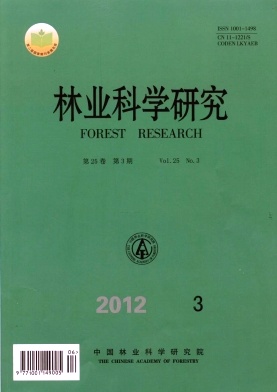|
[1]
|
Pregitzer K S, Euskirchen E S. Carbon cycling and storage in world forests: biome patterns related to forest age[J]. Global Change Biology, 2004, 10(12):2052-2077 |
|
[2]
|
Rustad L E, Huntington T G, Boone R D. Controls on soil respiration: Implications for climate change[J]. Biogeochemistry, 2000, 48(1):1-6 |
|
[3]
|
Fang C, Smith P, Moncrieff J B,et al. Similar response of labile and resistant soil organic matter pools to changes in temperature[J]. Nature, 2005, 433(7021):57-59 |
|
[4]
|
Wagai R, Mayer L M, Kitayama K,et al. Climate and parent material controls on organic matter storage in surface soils: A three-pool, density-separation approach[J]. Geoderma, 2008, 147(1-2):23-33 |
|
[5]
|
Dixon R K, Solomon A M, Brown S,et al. Carbon Pools and Flux of Global Forest Ecosystems[J]. Science, 1994, 263(5144):185-190 |
|
[6]
|
Allen A S, Schlesinger W H. Nutrient limitations to soil microbial biomass and activity in loblolly pine forests[J]. Soil Biology and Biochemistry, 2004, 36(4):581-589 |
|
[7]
|
Jia G M, Liu B R, Wang G,et al. The microbial biomass and activity in soil with shrub (Caragana korshinskii K.) plantation in the semi-arid loess plateau in China[J]. European Journal of Soil Biology, 2010, 46(1):6-10 |
|
[8]
|
Zhou J B, Chen X L, Zhang Y L,et al. Nitrogen released from different plant residues of the Loess Plateau and their additions on contents of microbial biomass carbon, nitrogen in soil[J]. Acta Ecologica Sinica, 2010, 30(3):123-128 |
|
[9]
|
刘 爽, 王传宽. 五种温带森林土壤微生物生物量碳氮的时空格局[J]. 生态学报, 2010, 30(12):3135-3143
|
|
[10]
|
孟 盈, 薛敬意, 沙丽清,等. 西双版纳不同热带森林下土壤铵态氮和硝态氮动态研究[J]. 植物生态学报, 2001, 25(1):99-104
|
|
[11]
|
邓小文, 韩士杰. 氮沉降对森林生态系统土壤碳库的影响[J]. 生态学杂志, 2007, 26(10):1622-1627
|
|
[12]
|
Melillo J M, Steudler P A, Aber J D,et al. Soil Warming and Carbon-Cycle Feedbacks to the Climate System[J]. Science, 2002, 298(5601):2173-2176 |
|
[13]
|
Pan K, Xu Z, Blumfield T,et al. In situ mineral 15N dynamics and fate of added 15NH4+ in hoop pine plantation and adjacent native forest in subtropical Australia[J]. Journal of Soils and Sediments, 2008, 8(6):398-405 |
|
[14]
|
刘秉儒. 贺兰山东坡典型植物群落土壤微生物量碳、氮沿海拔梯度的变化特征[J]. 生态环境学报, 2010, 19(4):883-888
|
|
[15]
|
何友军, 王清奎, 汪思龙,等. 杉木人工林土壤微生物生物量碳氮特征及其与土壤养分的关系[J]. 应用生态学报, 2006, 17(12):2292-2296
|
|
[16]
|
刘占峰, 刘国华, 傅伯杰,等. 人工油松林(Pinus tabulaeformis)恢复过程中土壤微生物生物量C、N的变化特征[J]. 生态学报, 2007, 27(3):1011-1018
|
|
[17]
|
袁海伟, 苏以荣, 郑 华,等. 喀斯特峰丛洼地不同土地利用类型土壤有机碳和氮素分布特征[J]. 生态学杂志, 2007, 26(10):1579-1584
|
|
[18]
|
姜汉侨. 云南植被分布的特点及其地带规律性(续)[J]. 云南植物研究, 1980, 2(2):142-151
|
|
[19]
|
吴金水, 林启美, 黄巧云,等. 土壤微生物生物量测定方法及其应用[M]. 北京: 气象出版社,2006
|
|
[20]
|
尤海舟, 刘兴良, 缪 宁,et al. 川滇高山栎种群不同海拔空间格局的尺度效应及个体间空间关联[J]. 生态学报, 2010, 30(15):4004-4011
|
|
[21]
|
刘兴良, 岳永杰, 郑绍伟,等. 川滇高山栎种群统计特征的海拔梯度变化[J]. 四川林业科技, 2005, 26(4):9-14
|
|
[22]
|
王国严, 罗 建, 徐阿生,等. 西藏色季拉山川滇高山栎种群结构与动态[J]. 林业科学研究, 2011, 24(3):292-299
|
|
[23]
|
陈俊华, 刘兴良, 何 飞,等. 卧龙巴朗山川滇高山栎灌丛主要木本植物种群生态位特征[J]. 林业科学, 2010, 46(3):23-28
|
|
[24]
|
刘兴良, 刘世荣, 宿以明,等. 巴郎山川滇高山栎灌丛地上生物量及其对海拔梯度的响应[J]. 林业科学, 2006, 42(2):1-7
|
|
[25]
|
李 进, 陈可咏, 李渤生. 不同海拔高度川滇高山栎群体遗传多样性的变化[J]. 植物学报, 1998, 40(8):761-767
|
|
[26]
|
朱万泽, 王三根, 郝云庆. 川滇高山栎灌丛萌生过程中的营养元素供应动态[J]. 植物生态学报, 2010, 34(10):1185-1195
|
|
[27]
|
刘兴良, 郝晓东, 杨冬生,等. 卧龙巴郎山川滇高山栎灌丛地上生物量及其模型[J]. 生态学杂志, 2006, 25(5):487-491
|
|
[28]
|
段文标. 阔叶红松林林隙土壤水分微环境变异特征分析[J]. 自然资源学报, 2009, 24(5):809-815
|
|
[29]
|
黄 容, 潘开文, 王进闯,等. 岷江上游半干旱河谷区3种林型土壤氮素的比较[J]. 生态学报, 2010, 30(5):1210-1216
|
|
[30]
|
朱志建, 姜培坤, 徐秋芳. 不同森林植被下土壤微生物量碳和易氧化态碳的比较[J]. 林业科学研究, 2006, 19(4):523-526
|
|
[31]
|
Quideau S A, Chadwick O A, Trumbore S E,et al. Vegetation control on soil organic matter dynamics[J]. Organic Geochemistry, 2001, 32(2):247-252 |
|
[32]
|
张兴锐, 许中旗, 纪晓林,等. 燕山北部山地典型植物群落土壤有机碳贮量及其分布特征[J]. 水土保持学报, 2010, 24(1):186-190,196
|
|
[33]
|
Luizo R C C, Luizo F J, Paiva R Q,et al. Variation of carbon and nitrogen cycling processes along a topographic gradient in a central Amazonian forest[J]. Global Change Biology, 2004, 10(5):592-600 |
|
[34]
|
张 鹏, 张 涛, 陈年来. 祁连山北麓山体垂直带土壤碳氮分布特征及影响因素[J]. 应用生态学报, 2009, 20(3):518-524
|
|
[35]
|
Xue X J, Li Y N, Du M Y,et al. Soil organic matter and total Nitrogen changing with altitudes on the southern foot of eastern Qilian Mountains[J]. Journal of Glaciology and Geocryology, 2009, 31(4):642-649 |
|
[36]
|
李贵才, 韩兴国, 黄建辉. 哀牢山木果柯林及其退化植被下土壤无机氮库的干季动态特征[J]. 植物生态学报, 2001, 25(2):210- 217
|
|
[37]
|
崔晓阳, 宋金凤. 原始森林土壤NH4+/NO3-生境特征与某些针叶树种的适应性[J]. 生态学报, 2005, 25(11):3082-3092
|
|
[38]
|
Keeney D R. Prediction of Soil Nitrogen Availability in Forest Ecosystems: A Literature Review[J]. Forest Science, 1980, 26(1):159-171 |
|
[39]
|
王 斌, 陈亚明, 周志宇. 贺兰山西坡不同海拔梯度上土壤氮素矿化作用的研究[J]. 中国沙漠, 2007, 27(3):483-490
|
|
[40]
|
Yao H, Bowman D, Shi W. Seasonal variations of soil microbial biomass and activity in warm-and cool-season turfgrass systems[J]. Soil Biology and Biochemistry, 2011, 43(7):1536-1543 |
|
[41]
|
Powlson D S, Prookes P C, Christensen B T. Measurement of soil microbial biomass provides an early indication of changes in total soil organic matter due to straw incorporation[J]. Soil Biology and Biochemistry, 1987, 19(2):159-164 |
|
[42]
|
Singh J S, Singh D P, Kashyap A K. Microbial Biomass C, N and P in Disturbed Dry Tropical Forest Soils, India[J]. Pedosphere, 2010, 20(6):780-788 |
|
[43]
|
周 焱, 徐宪根, 王 丰,等. 武夷山不同海拔梯度土壤微生物生物量、微生物呼吸及其商值(qMB,qCO2)[J]. 生态学杂志, 2009, 28(2):265-269
|





 DownLoad:
DownLoad: